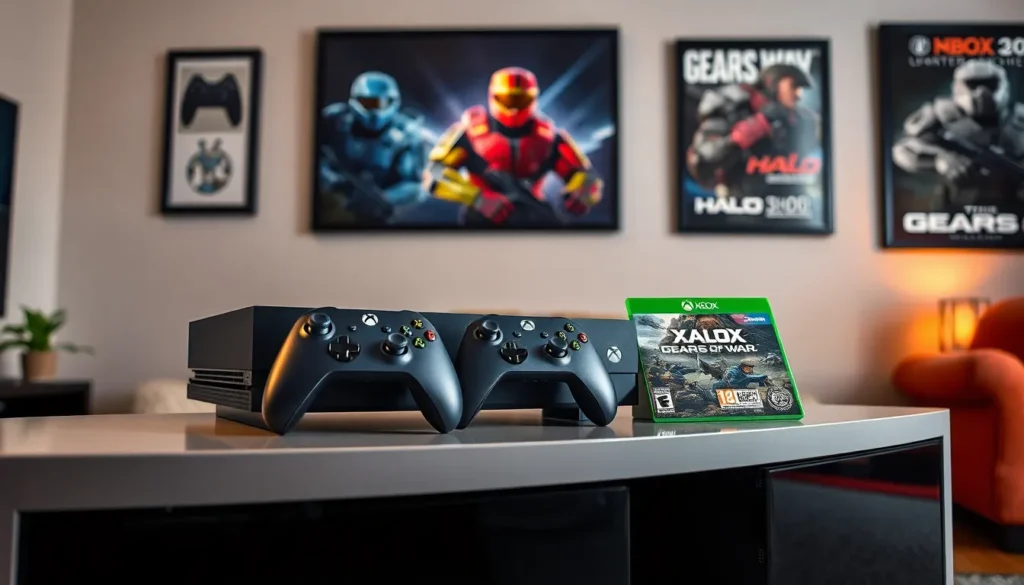Table of Contents
ToggleIn the fast-paced world of mobile gaming, getting players hooked isn’t just a goal—it’s an art form. With millions of games vying for attention, optimizing a mobile game can mean the difference between a blockbuster hit and a digital ghost town. Imagine putting in countless hours of development only to watch your masterpiece sink like a lead balloon. Yikes!
Understanding Mobile Game Optimization
Mobile game optimization involves enhancing gameplay experiences to ensure player satisfaction and retention. Successful optimization plays a crucial role in distinguishing between thriving and underperforming games.
Importance of Optimization
Optimization significantly influences player engagement and satisfaction. It affects loading times, in-game performance, and overall usability. A well-optimized mobile game can lead to positive reviews and increased visibility in app stores. Statistics indicate that 70% of users uninstall apps due to poor performance. Gamers seek smooth experiences without frustrating lags or crashes. Prioritizing technical improvements not only fosters player retention but also encourages word-of-mouth recommendations.
Common Challenges in Mobile Games
Developers face several challenges when optimizing mobile games. Resource limitations, such as budget and time constraints, can hinder optimization efforts. Frequent device fragmentation adds complexity; games must work seamlessly across various OS versions and hardware specifications. Performance tuning requires continuous updates to adapt to evolving player expectations. Balancing graphics quality with performance remains a constant challenge. Additionally, external competition can overshadow an unoptimized title, reducing its chances of success in a saturated market.
Key Techniques for Mobile Game Optimization

Optimizing mobile games involves several key techniques that enhance user experience and performance. Developers benefit from focusing on graphics quality and resource management to create compelling gameplay.
Graphics Optimization
Graphics optimization enhances visual elements while maintaining performance. Using efficient textures reduces loading times, positively impacting player retention. Lowering the resolution of less-visible assets can balance quality and performance. Implementing dynamic scaling keeps frame rates high without sacrificing the player’s experience. Developers can also utilize sprite atlases to minimize draw calls, increasing rendering efficiency. Finally, utilizing tools like Texture Packer streamlines asset management, allowing for quicker updates and smoother gameplay.
Resource Management
Resource management involves effectively utilizing available device capabilities. Prioritizing memory consumption reduces crashes and slowdowns. Implementing object pooling minimizes the overhead of instantiating and destroying objects, ensuring smoother gameplay. Developers might also adopt lazy loading techniques, where assets load in the background, enhancing initial experience without interruptions. Regular profiling identifies performance bottlenecks, allowing for targeted improvements. Prioritizing these strategies keeps the game responsive, ensuring players enjoy an engaging and seamless experience.
Tools and Frameworks for Optimization
Numerous tools and frameworks assist developers in optimizing mobile games for performance and user experience. Employing the right resources can lead to significant improvements in gameplay.
Popular Optimization Tools
Unity Profiler and Unreal Insights serve as essential tools for mobile game developers. Unity Profiler identifies performance bottlenecks in Unity projects, offering insights into CPU and GPU usage while providing data on memory allocation. Unreal Insights allows developers to analyze frame rate and memory usage across Unreal Engine projects. GameBench offers real-time performance monitoring to analyze frame rates, load times, and other metrics. Additionally, tools like TexturePacker streamline texture management by efficiently packing sprite sheets, reducing loading times. Each of these tools plays a crucial role in ensuring optimal performance and enhanced player engagement.
Game Engines with Built-in Optimization Features
Developers often rely on game engines with built-in optimization capabilities. Unity and Unreal Engine stand out with comprehensive features designed to enhance performance. Unity allows developers to adjust quality settings dynamically, tailoring graphics performance to various devices while balancing visual fidelity. Unreal Engine includes a scalability system to automatically adjust textures and effects based on device capabilities. Cocos2d and Godot also offer lightweight solutions with integrated performance optimization tools. Relying on these engines enables developers to create optimized mobile games without extensive additional work, streamlining the development process while improving player retention.
Performance Metrics to Consider
Performance metrics are crucial for evaluating and improving mobile game optimization. Assessing these metrics helps developers enhance player experiences and maintain engagement.
Frame Rate and Responsiveness
Frame rate directly affects the fluidity of gameplay. A stable frame rate of 30 frames per second or higher ensures players enjoy smooth interactions. This consistency leads to better responsiveness, which is critical during fast-paced segments. It’s vital for developers to utilize profiling tools to monitor frame rate performance in real time, addressing any drops swiftly. Maintaining high responsiveness enhances player satisfaction and reduces frustration, fostering positive reviews and increased retention rates.
Load Time and Memory Usage
Load time significantly impacts player engagement with mobile games. Average load times exceeding two seconds may lead to higher uninstall rates. Developers aim for load times under two seconds to enhance initial impressions. Efficient memory usage also plays a pivotal role in performance. Prioritizing asset loading and managing memory can prevent crashes and lag. Using object pooling and lazy loading techniques effectively optimizes resource management, ensuring smoother gameplay experiences and higher user retention.
Mobile game optimization is essential for developers aiming to thrive in a competitive landscape. By focusing on enhancing gameplay experiences and ensuring robust performance, developers can significantly improve player retention and satisfaction. Utilizing effective techniques like graphics optimization and resource management plays a crucial role in creating engaging experiences.
Moreover the right tools and frameworks enable developers to streamline the optimization process. Regularly monitoring performance metrics ensures that games remain responsive and enjoyable. In a market where user expectations are high and uninstall rates can soar due to poor performance, prioritizing optimization is not just beneficial—it’s imperative for success.




